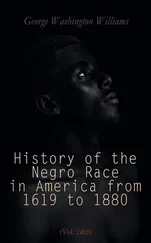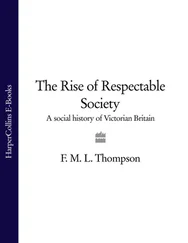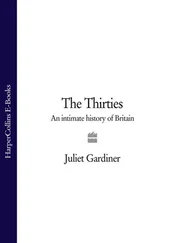Here, too, a ‘Viking Britain’ came alive and, to the likes of William Morris and J. R. R. Tolkien, this was a place that seemed to lurk unseen just at the borders of their rapidly modernizing world. It was there not only in the writings and monuments that time had preserved, but also (and perhaps especially) in the elements themselves – the grey sea, the north wind and the very bones of the earth. In travel, art and literature, landscape became a way to commune with the people of the Viking Age – people who had seen the same red sun rising, felt the same cold wind on their necks, touched the same fissures in the smooth grey rock. This has in turn become a way to explore the mentality and world-view of a people with an intimate and profoundly imaginative relationship with the environment. For people living in the latter centuries of the first millennium, the landscape was teeming with unseen inhabitants and riddled with gateways to other worlds. Pits and ditches, barrows and ruins, mountains, rivers and forests: all could be home to the dead, the divine and the diabolical, haunted by monsters and gods.
Telling the story of the Vikings in Britain is therefore not a straightforward undertaking – it is the tale of a people who were not a people, who came to lands that were not yet nations. The historical record is patchy, the archaeology equivocal. Even the very words we use – ‘Viking’ most of all – slither away from easy definition. It is, moreover, the story not only of the three centuries leading up to (and overlapping) the Norman Conquest, but also of how that time has been remembered, recycled and reimagined by successive generations. It is, as earlier generations seem better to have appreciated, a world that is still tangible. The sense that the past is present in the landscape – that there is another world hovering just out of sight – has receded in step with modernity’s alienation from the land. Against the advance of technology, urbanization and globalization, our imaginative connection to landscape continues to fight the long defeat. The land, water and sky have largely been disenchanted of the past, just as they were disenchanted of their elves and spirits during the enlightenment and industrial revolution. But the past can never be wholly erased, and the rivers, hills, woods and stones of Britain remain deeply imprinted with memories of the Vikings and their world.
It is a legacy that runs far beyond the confines of Britain itself. From the seventeenth century to the present, the English-speaking diaspora – of people, ideas, systems, values, laws and language – has had a transformative impact on the world, firstly through the expansion of Britain’s Empire, and latterly through the ongoing dominance and global reach of North American culture and economic power. The memory of the Vikings may only be one small cell in the vast genome of Anglophone identity, but it is a tenacious and enduring one. Sometimes it appears overtly, in the simplified and bowdlerized versions of Norse myths and Viking stereotypes that penetrate popular culture, whether through the pages of comic books, the iconography of football teams or the covers of heavy-metal albums. But it also runs in deeper channels of thought and language, the serpentine ships that travel the dark rivers of the subconscious mind, a half-seen shadow of grim gods and thudding oars and dark pine forests wreathed in mist.
The chapters that follow tell the tale of the Vikings in Britain as a broadly chronological narrative. At times the story diverges as events begin to unfold simultaneously across Britain, but I have largely endeavoured to keep the overall momentum moving forward as much as possible. At the same time, however, this is also a book about ideas, objects and places. Through the physical remains and landscapes that the Vikings fashioned and walked – their runestones and ship burials, settlements and battlefields – it is possible to reach beyond the bare rehearsal of names and dates to explore the way that people in Viking Age Britain thought about their world and their place within it, and the way they have been remembered in the centuries since their passing: the stories they told and the tales they inspired, their fears, their fantasies, and the dooms they aspired to. Several themes recur throughout this book – in particular what being a ‘Viking’ really meant, how attitudes and identities changed over time, and what that meant for the ethnic evolution of the people of Britain – but in a general sense this book is about illuminating an influence on British history that has been profound and enduring, one that has shaped languages, culture and the historical trajectory of the British Isles and beyond for hundreds of years. In a small way, I hope, this book may help to restore to the Vikings some of the dignity that they have too often been denied.
There are, it must be acknowledged, some difficulties that attend the writing of a chronological history of this period; some parts of Britain – England especially – receive more detailed treatment than others, and not all of the evidence is discussed at equal length. In many cases this reflects the availability of source material: both the lack of it and – less often – its abundance. A complete inventory of all Viking-period archaeology found on the Isle of Man would run to many hundreds of pages; a compendium of all the contemporary written references to Viking activity in the same place would fit on the back of a small envelope. Frequently, however, the question of what to cover and what to leave out has been decided by me, and I make no apology for this: it reflects the fact that this book is a personal, at times perhaps idiosyncratic, exploration of the subject. It is intended to be neither definitive nor comprehensive – it cannot hope to be either, not within the covers of a book as slim as this. For all of the detailed regional surveys and the surfeit of books (of wildly varying quality) on the Vikings as a whole, a truly definitive compendium of evidence for the Vikings in Britain remains to be written: it would be a mammoth undertaking, probably running to multiple volumes. It would also, more than likely, be made less than definitive within days of its publication, as new data – much of it gathered by metal-detectorists – continues to roll in, week after week, and spectacular finds are made with some regularity.2 At the same time, major research projects continue to transform our perception of Viking Age societies, their interactions and their evolutions; this too is unlikely to stop any time soon.3
This book has not been written with an academic audience in mind, but I am nevertheless deeply conscious of the need to provide signposts for the reader to the sources of the material from which this narrative has been constructed. Although it would be unnecessarily distracting to provide full scholarly citations, some textual references are necessary for the reader’s orientation and to acknowledge sources that I have cited directly. I have chosen, in the main, to restrict these citations to primary written sources and archaeological reports – that is, to evidence rather than interpretation. However, where the work of individual scholars is referred to directly, or where a particular argument or line of reasoning is consciously derived from the work of others, I have also provided the appropriate citations. For brevity, a full citation is only provided the first time a work is referred to in the notes; thereafter, works are referred to by their author (or editor) and abbreviated title only. Primary sources that are referred to frequently have been abbreviated, and a full list of the abbreviations used and a full citation to the edition(s) relied upon in each case are provided in the endmatter. Where primary sources have been quoted in the text and the translation is my own, the citation in the Notes refers to an original language edition of the source in question. Where a translated edition of a source has been quoted, the citation in the Notes directs the reader to the translated edition relied upon. Exceptions are indicated in the Notes. A short summary of relevant further reading can be found at the end of this book. This is intended to direct the reader to the most accessible and up-to-date treatments and is intended only as a starting point to the vast literature that touches on the Vikings – in Britain and in wider perspective. In addition, a full bibliography of all literature cited can be accessed at tjtwilliams.com
Читать дальше












